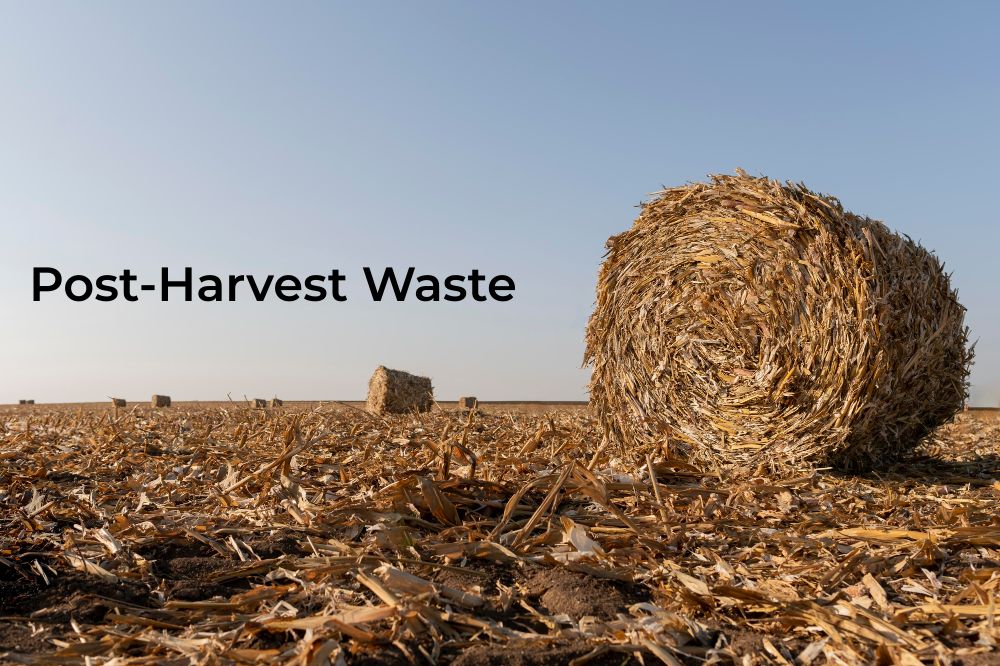
India stands as the second largest agro-based economy, with year-round crop cultivation, yielding vast amounts of agricultural waste, including crop residues. The practice of stubble burning, particularly in the northern regions, has escalated into a significant environmental concern. This blog aims to delve into the issue of stubble burning in India, exploring its impacts on the environment, and examining sustainable alternatives for post-harvest waste management.
What is Stubble Burning and its Impact on India?
Stubble burning, the practice of setting fire to plant debris left after harvesting, is a common method for clearing fields in India. Although cost-effective, this practice is environmentally detrimental. Annually, out of the 500 million tons of crop residue produced in India, about 92 million tons are burned, contributing to severe air pollution and exacerbating global warming.
The Environmental Harm
The environmental implications of stubble burning are alarming. It results in the emission of greenhouse gases (GHGs) such as carbon dioxide, methane, and nitrous oxide, along with particulate matter and other pollutants. This not only deteriorates air quality but also contributes to climate change. For instance, National Capital Region, faces severe air quality issues in winters annually, predominantly due to stubble burning in nearby states.
The Urgency to Act
The urgency to address stubble burning stems from its impact on health and the environment. The resultant air pollution poses serious health risks, leading to respiratory problems and other health issues. This practice also leads to the loss of valuable soil nutrients and organic matter that could otherwise enrich the soil.
Alternative Ways to Stop Stubble Burning
Composting
Composting transforms crop residue into a rich, organic fertilizer through a natural process. This approach not only enhances soil quality but also reduces reliance on chemical fertilizers, supporting eco-friendly farming practices. Additionally, composting significantly contributes to capturing carbon, thereby aiding in efforts to combat climate change.
Biochar Production
Biochar production, a process of transforming agricultural waste into a stable form of carbon, can significantly improve soil fertility and water retention. This method is gaining popularity as a means to sequester carbon and reduce GHG emissions. Additionally, biochar can improve soil health, thus enhancing agricultural productivity.
Mechanization and In-Situ Management
The adoption of mechanized solutions will allow for efficient management of crop residue without resorting to burning. In-situ management, which entails integrating crop residue into the soil, enhances soil fertility and health. This approach is both eco-friendly and economically advantageous over time.
Biogas Production
Biogas production from agricultural waste is an innovative and sustainable solution. This method provides a renewable source of energy and reduces dependence on fossil fuels. It also offers a dual benefit – managing agricultural waste and producing energy.
Government Initiatives in India
The Indian government has launched several initiatives to combat stubble burning:
- National Policies: The National Policy for Management of Crop Residue focuses on promoting sustainable management and utilization of crop residue.
- Financial Incentives: Programs offering financial incentives for the purchase of equipment aiding in residue management have been introduced. These incentives encourage farmers to adopt sustainable practices over burning.
- Remote Sensing Technologies: The use of satellite technology for monitoring crop residue management helps in identifying areas where stubble burning is prevalent and aids in targeted intervention.
- Promotion of Biogas Plants: The government encourages the use of biogas plants for converting agricultural waste into energy, reducing the need for burning.
Conclusion
In conclusion, managing post-harvest waste through environmentally friendly methods is crucial for India’s sustainable future. The adoption of practices like composting, biochar production, mechanization, and biogas production can significantly reduce the dependency on stubble burning. While government interventions and policies are vital, the ultimate success hinges on the participation and awareness of farmers. By embracing these eco-friendly methods, India can achieve a harmonious balance between agricultural productivity and environmental conservation, ensuring a healthier nation for future generations.

